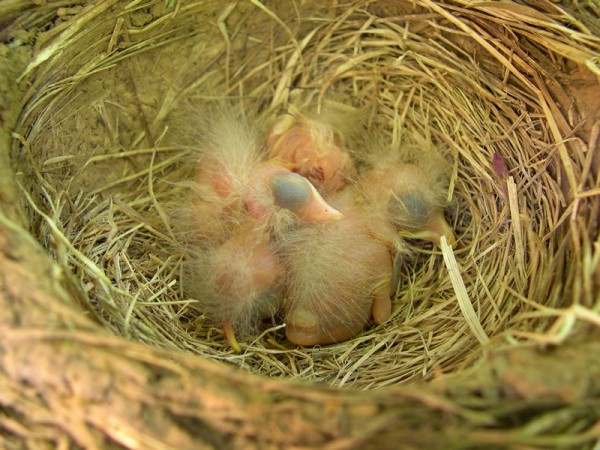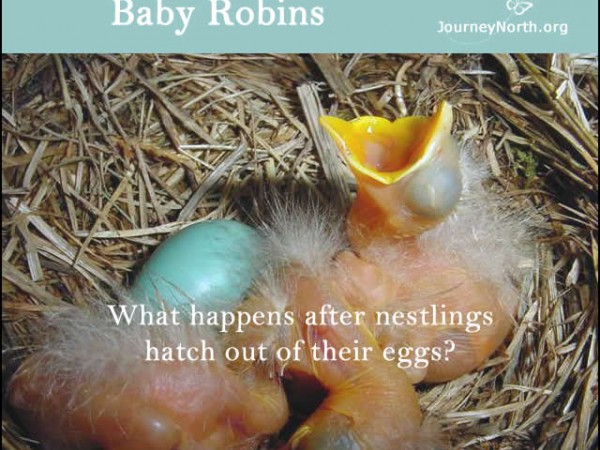Baby Robins in the Nest
Cute and Cuddly?
Bulging eyes, gaping beaks and bare pink skin — baby robins are a sight to behold! How would you describe newly-hatched nestlings inside a robin’s nest?
Big Eyes
A baby robin’s transparent skin and translucent skull let us see the actual size of the eyes. They look enormous on tiny nestlings, but will soon be hidden by feathers. Baby robins are born with their eyes closed and remain shut for about five days.
See-through Skin
The skin of a baby robin is so thin we can sometimes see the internal organs. If you look closely at the pinkish skin of a baby robin, you may see the purplish-red liver, orange yolk-sac, and greenish gall bladder. The gall bladder holds bile to help the birds digest worms. As the nestling grows bigger, the yolk sac gets smaller. It may show some bright yellow areas here and there; those are fat deposits.
Tufts of Fluff
A newly-hatched robin has only a few tufts of fluff. The down feathers grow in quickly. This layer of soft feathers makes the nestling look fluffy and helps keep it warm when mother is away. How do body feathers grow? Each feather looks like a miniature straw at first. Then, that smooth outer case — the sheath — crumbles and allows the developing feather to open. In about 14 days, the baby robin is covered with body feathers.
Nestlings to Fledglings
Baby robins grow quickly! Within 13-15 days, the once-defenseless babies are ready to leave the nest. Watch for juvenile robins in your backyard. You can identify a fledgling by its fluffy, speckled breast. Keep watching at the nesting site as well. Mother robin may soon be busy with a new brood of babies begging to be fed. Be sure to report your observations.




